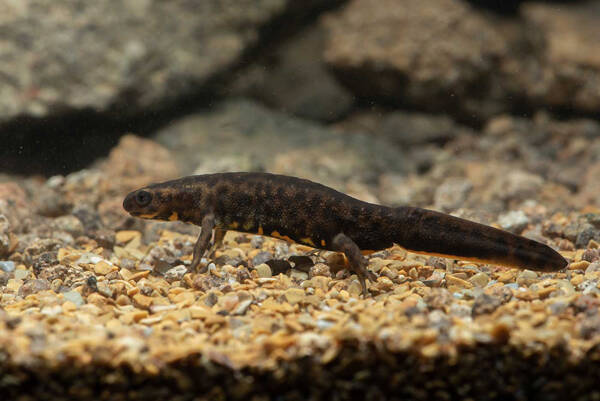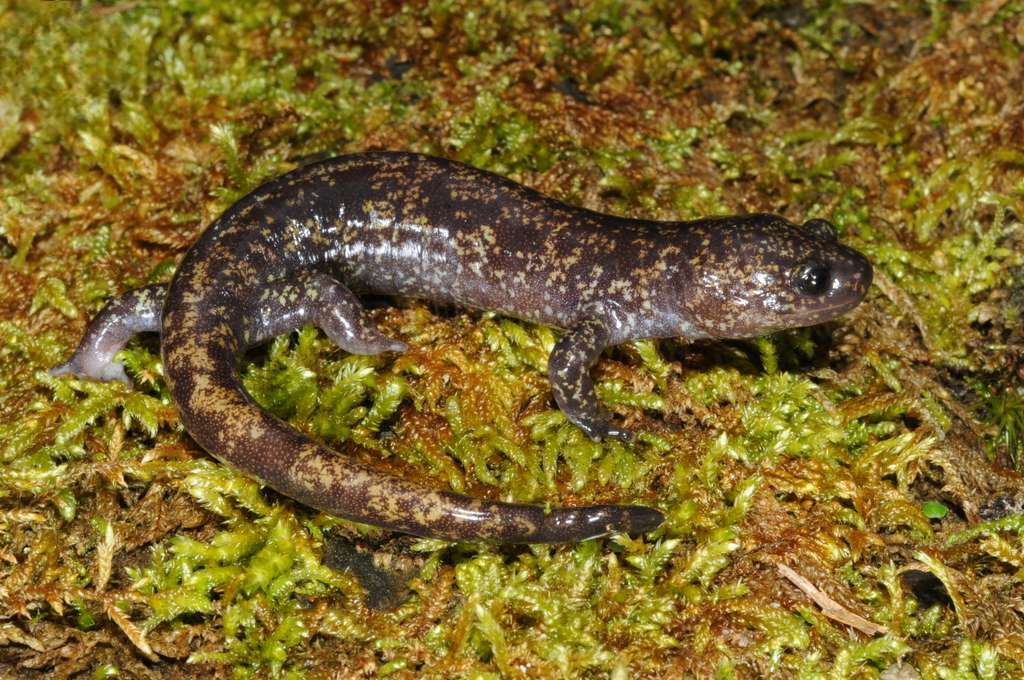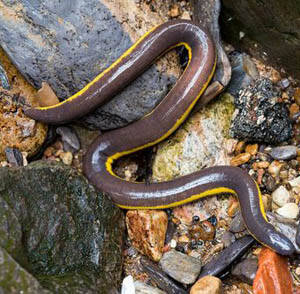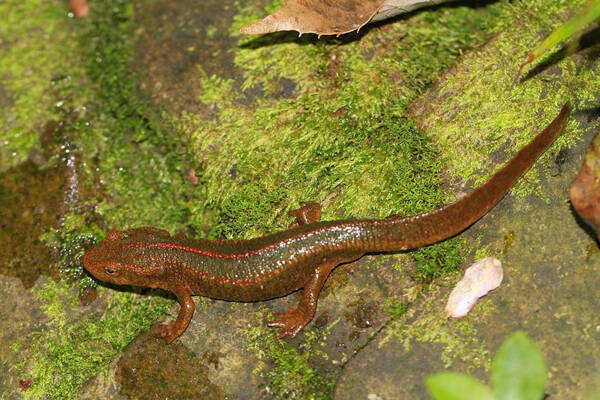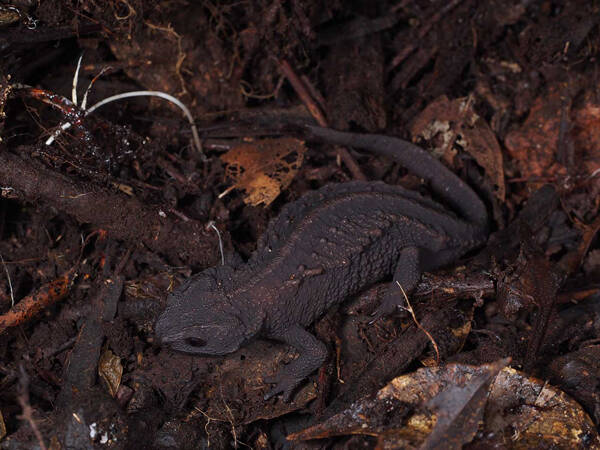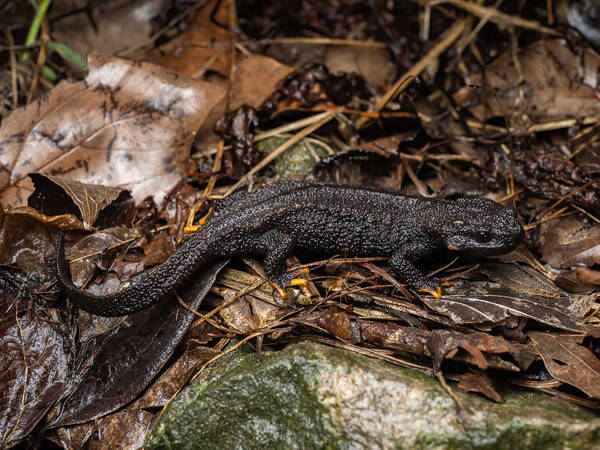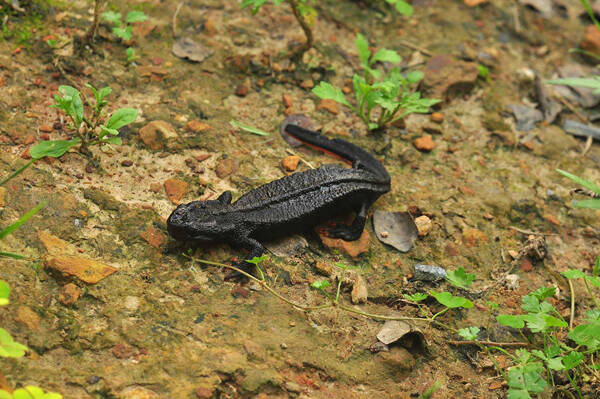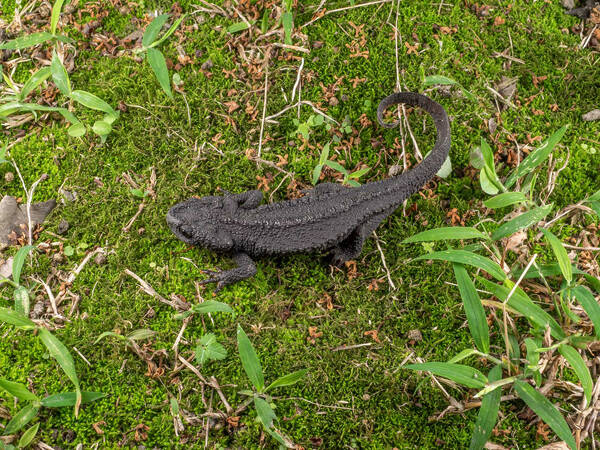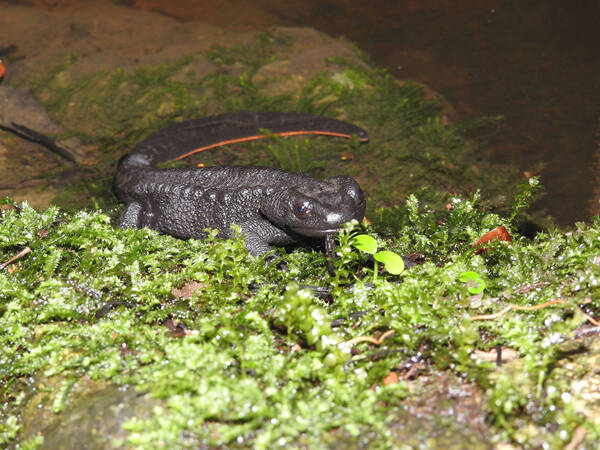Cynops orphicus
IUCN
LCBasic Information
Scientific classification
- name:Cynops orphicus
- Scientific Name:Cynops orphicus,Shantou Salamander
- Outline:Urodela
- Family:Caudata Salamandridae Salamander
Vital signs
- length:Approx. 74 mm
- Weight:
- lifetime:
Feature
There is an irregular longitudinal orange-red stripe in the middle of the ventral surface of the body.
Distribution and Habitat
Endemic to China, distributed in Guangdong (Chaozhou, Shantou, Jiexi) and Fujian (Dehua).
Lives in mountainous areas at an altitude of 640-1600m.
Appearance
The head is flat, with a rounded snout; the labial folds are obvious; the vomerine dentition is inverted V-shaped. The trunk is cylindrical; the tail gradually flattens laterally, the rear part of the tail gradually narrows, and the tail tip is pointed. The dorsal and ventral surfaces of the body are relatively smooth, with warts, and there are about 14 costal grooves or no obvious; the neck folds are obvious or not obvious. The dorsal surface of the body is dark brown or yellowish brown, and the body and tail of lighter color have dark brown spots; the throat and ventral surface of the body are orange-red or orange-yellow, all with black spots.
Details
The Chaoshan salamander is a tailed amphibian of the family Salamandridae and the genus Salamandridae. It lives in mountainous areas with an altitude of 640 to 1,600 meters. During the breeding season, adult salamanders are mostly active in still ponds and swamps, often living in ponds with a depth of about 1 meter and more aquatic plants, and the bottom of the pond has thick humus. A group of salamanders have been seen in the wild fighting for an earthworm at the bottom of the water; when kept indoors, the salamander can swallow an earthworm about 65 mm long. It can also be fed with small fish, shrimps and insects.
The Chaoshan salamander undergoes internal fertilization without embracing. When the male senses that there is a mating opportunity around, he quickly approaches the female, comes to the front of the female's head, and communicates with the female through mechanical stimulation of kissing to attract the female's attention. During the following process, the female's cloaca takes the sperm sac into her body when it passes above the sperm sac. When the male confirms that the female has taken the sperm sac, he turns around and bites the female's abdomen, causing the female's body to become stiff for a certain period of time to ensure that the sperm taken by the female is stored completely. The sperm stored in the cloaca area will fertilize the eggs when the female ovulates.
The ecological environment quality of the habitat of this newt has declined, and its population is very small.
Listed in the second level of the "List of National Key Protected Wildlife in China".
